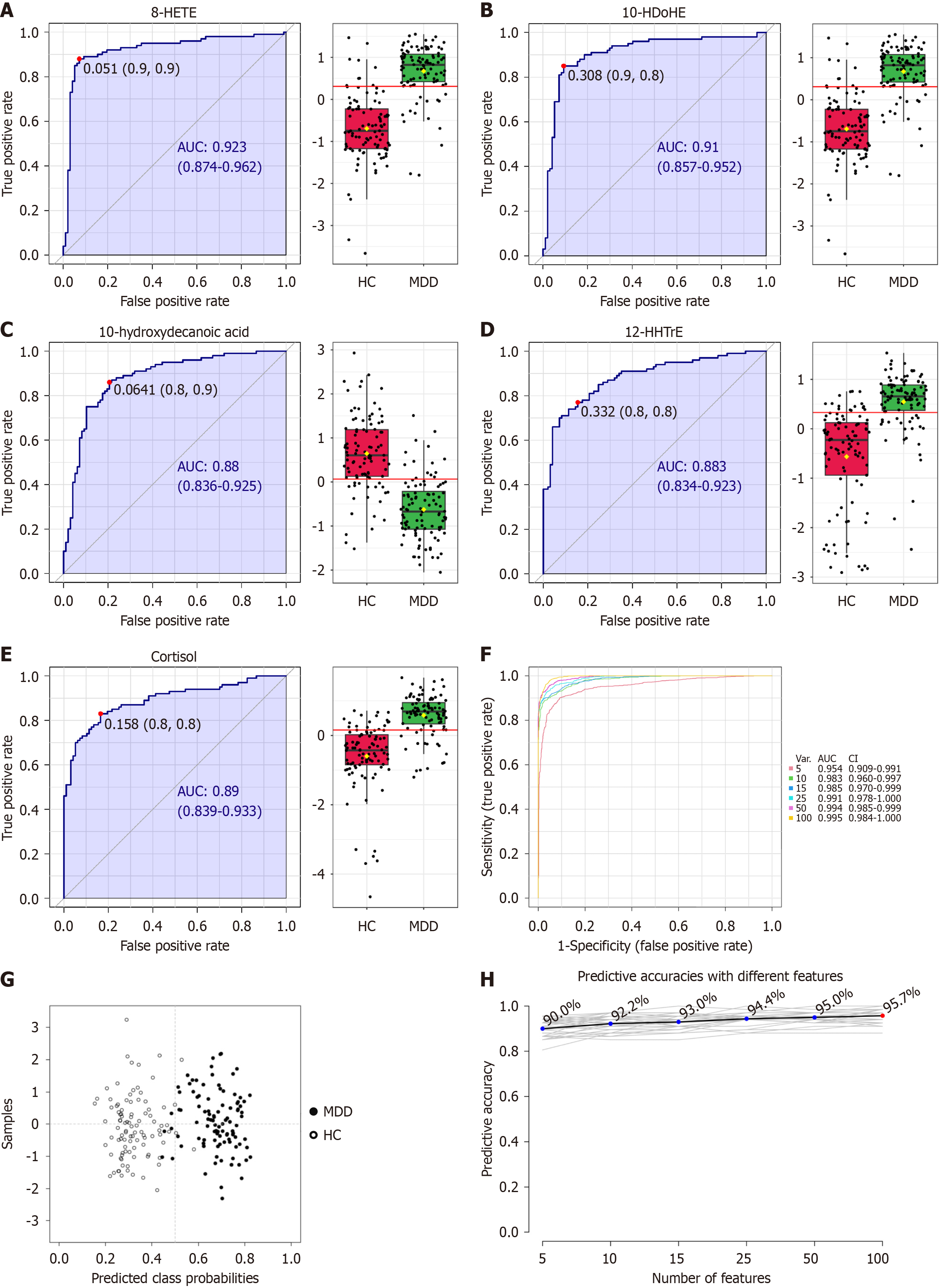Copyright
©The Author(s) 2025.
World J Psychiatry. May 19, 2025; 15(5): 102618
Published online May 19, 2025. doi: 10.5498/wjp.v15.i5.102618
Published online May 19, 2025. doi: 10.5498/wjp.v15.i5.102618
Figure 3 Receiver operating characteristic analysis revealing candidate metabolomic biomarkers for major depressive disorder diag
- Citation: Cao B, Liu YL, Wang N, Huang Y, Lu CX, Li QY, Zou HY. Alterations of serum metabolic profile in major depressive disorder: A case-control study in the Chinese population. World J Psychiatry 2025; 15(5): 102618
- URL: https://www.wjgnet.com/2220-3206/full/v15/i5/102618.htm
- DOI: https://dx.doi.org/10.5498/wjp.v15.i5.102618









